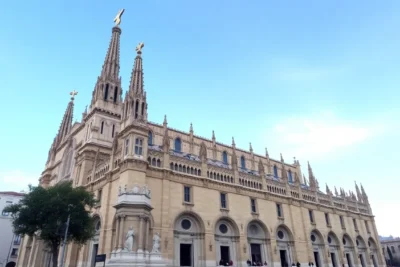
- The Architectural Marvel of the Sagrada Familia: Gaudí's Vision
- Exploring the History and Significance of the Sagrada Familia
- A Visitor's Guide to the Sagrada Familia: Tips and Tricks
- The Symbolism Behind the Sagrada Familia's Design Elements
- Planning Your Visit to Barcelona's Sagrada Familia: What You Need to Know
- Uncovering the Secrets of the Sagrada Familia: Art and Faith Combined
The Sagrada Familia stands as a testament to the genius of architect Antoni Gaudí, captivating millions of visitors with its intricate designs and towering spires. As one of the most recognizable landmarks in the world, this basilica is not only a symbol of Barcelona but also a masterpiece of modernist architecture.
In this article, we explore the elements that make The Sagrada Familia: A Guide to Barcelona's Iconic Landmark an essential visit for anyone traveling to the city. From its stunning facades to the rich history behind its construction, discover why this architectural marvel continues to inspire awe and admiration.
The Architectural Marvel of the Sagrada Familia: Gaudí's Vision
The architectural marvel of the Sagrada Familia is a true embodiment of Gaudí's vision, blending nature and spirituality into a cohesive design. Gaudí drew inspiration from organic shapes and forms, creating a structure that mimics the very essence of life. His innovative use of geometry allows for an interplay of light and shadow, enhancing the basilica's ethereal quality.
One of the most distinctive features of the Sagrada Familia is its elaborate facades, each telling a different story. The three main facades are:
- The Nativity Facade: Celebrating the birth of Jesus, adorned with intricate sculptures of flora and fauna.
- The Passion Facade: A stark representation of Christ’s suffering, characterized by its angular, skeletal forms.
- The Glory Facade: This facade, still under construction, will depict the glory of Jesus and the path to God.
Gaudí's commitment to using natural materials is evident throughout the basilica, with elements such as stone, brick, and wrought iron harmoniously integrated into the structure. The use of these materials not only emphasizes sustainability but also enhances the monument's connection to the environment. Furthermore, the innovative construction techniques employed by Gaudí allow for ongoing development, ensuring that this masterpiece continues to evolve.
Lastly, the Sagrada Familia's towers, reaching heights of up to 172.5 meters, symbolize the connection between heaven and earth. Each tower is dedicated to different figures from Christianity, showcasing Gaudí's dedication to his faith. As a result, the Sagrada Familia stands not just as a building, but as a spiritual journey that invites visitors to reflect on their own beliefs and experiences.
Exploring the History and Significance of the Sagrada Familia
The Sagrada Familia was commissioned in 1882 and has been under construction for over a century, resulting in a fascinating blend of architectural styles. The basilica's design has evolved, reflecting not only Gaudí's unique vision but also the advancements in construction technology. This ongoing development demonstrates the importance of cultural heritage and the dedication to completing Gaudí's original plans.
One of the significant aspects of the Sagrada Familia is its religious significance, serving as a place of worship and pilgrimage for many. The basilica is dedicated to the Holy Family, and the intricate details throughout the structure symbolize key elements of Christianity. Visitors can explore these themes through:
- Artistic Sculptures: Each figure and scene tells a story from the Bible, providing insights into Christian teachings.
- Spiritual Symbolism: The various architectural elements, like the towers and facades, represent different aspects of faith and spirituality.
Furthermore, the Sagrada Familia stands as a UNESCO World Heritage Site, recognized for its exceptional universal value. This designation not only highlights its architectural brilliance but also emphasizes the basilica's role in promoting cultural exchange and understanding. As a result, it continues to attract millions of visitors annually, eager to witness its beauty and learn about its rich history.
The dedication of artisans and craftsmen who have worked on the Sagrada Familia over the years cannot be overlooked. Their skills and passion mirror Gaudí's original intentions, ensuring that this iconic landmark remains a testament to human creativity and an enduring source of inspiration for future generations.
A Visitor's Guide to the Sagrada Familia: Tips and Tricks
Visiting the Sagrada Familia can be an unforgettable experience, but planning ahead is essential. To make the most of your visit, consider purchasing your tickets online in advance to avoid long queues. Additionally, aim to visit during off-peak hours, such as early mornings or late afternoons, for a more peaceful experience.
When exploring the basilica, don't miss the opportunity to join a guided tour. An expert guide can provide fascinating insights into Gaudí's vision and the intricate details of the architecture. This will enhance your appreciation of the structure's artistic and spiritual significance. Here are some tips to keep in mind:
- Audio Guides: Available for rent, these devices offer in-depth commentary on key features.
- Photography: Be mindful of photography policies, especially in prayer areas.
- Dress Code: As the Sagrada Familia is a place of worship, it's respectful to dress modestly.
To fully appreciate the Sagrada Familia, consider exploring its surroundings. The nearby Parc de la Ciutadella and the vibrant neighborhood of Gràcia offer a delightful contrast to the grandeur of the basilica. Planning a walking route can enhance your visit, allowing you to soak in the local culture and architecture. Remember, the Sagrada Familia is more than just a building; it is an experience that invites you to reflect and connect with its deeper meanings.
Lastly, if you're interested in the technical aspects of this architectural wonder, take a moment to look at the construction timeline. The ongoing work reflects both traditional craftsmanship and modern engineering techniques. Here’s a brief overview:
| Year | Event |
|---|---|
| 1882 | Foundation stone laid. |
| 1926 | Gaudí's passing; construction continues under different architects. |
| 2026 | Projected completion for the centenary of Gaudí's death. |
The Symbolism Behind the Sagrada Familia's Design Elements
The symbolism embedded in The Sagrada Familia extends far beyond its stunning visual elements. Each aspect of the basilica's design is meticulously crafted to convey spiritual truths and narratives from Christianity. For instance, the intricate sculptures found throughout the facades serve not only as decorative elements but also as visual stories that depict key moments in the life of Jesus, inviting visitors to engage with the religious themes they represent.
One of the most profound symbols within the Sagrada Familia is the representation of the Holy Trinity, encapsulated in the three main facades. Each facade reflects different aspects of the Christian faith: the Nativity, Passion, and Glory facades symbolize the birth of Christ, his suffering, and his resurrection, respectively. This tripartite structure allows for a comprehensive meditation on the life of Jesus, making the basilica a journey through fundamental Christian beliefs.
Furthermore, the use of natural forms in the basilica's architecture is a deliberate choice that reflects Gaudí's belief in the divine connection between nature and spirituality. Elements such as tree-like columns and organic shapes evoke feelings of tranquility and harmony, encouraging visitors to contemplate their relationship with the natural world as well as their spiritual path. This design philosophy underscores the importance of nature as a reflection of the divine.
Additionally, the Sagrada Familia's towers, reaching towards the heavens, symbolize the aspiration of faith. Each tower is dedicated to a different figure, representing important saints and biblical figures, thus creating a vertical pathway that metaphorically leads worshippers closer to God. This architectural choice emphasizes the basilica's role as a spiritual beacon, inviting all who enter to reflect on their own beliefs and the sacred narratives that shape their lives.
Planning Your Visit to Barcelona's Sagrada Familia: What You Need to Know
When planning your visit to Barcelona's Sagrada Familia, it's crucial to consider the best times to go. The basilica tends to be busiest during weekends and holidays, so visiting on a weekday can provide a more tranquil experience. For those looking to avoid crowds, the early morning hours right after opening or late afternoons are often the most peaceful times to explore.
Another important aspect of your visit is ticketing. To save time and ensure entry, it's advisable to purchase tickets online ahead of time. This not only helps bypass the long lines but also allows you to choose specific time slots for your visit. Additionally, consider opting for a guided tour, as this can enrich your understanding of Gaudí's intricate designs and the history of the basilica.
While visiting, remember to respect the sacred nature of the Sagrada Familia. This means adhering to a modest dress code, as it is a functioning place of worship. Also, be mindful of photography practices, especially in areas designated for prayer. Taking a moment to appreciate the peaceful atmosphere will enhance your overall experience.
Lastly, don't forget to explore the areas surrounding the Sagrada Familia. Nearby attractions, such as the scenic Parc de la Ciutadella and the charming streets of Gràcia, offer a delightful contrast to the grandeur of the basilica. Incorporating these sites into your itinerary can provide a well-rounded experience of Barcelona's vibrant culture and architecture.
Uncovering the Secrets of the Sagrada Familia: Art and Faith Combined
The Sagrada Familia is not only an architectural masterpiece but also a profound expression of faith and spirituality. Gaudí's design intricately weaves religious symbolism throughout the structure, inviting visitors to explore the depths of Christian teachings. Each facade serves as a narrative canvas, illustrating biblical stories and embodying the essence of faith through art.
At the heart of this stunning basilica lies a unique blend of art and devotion. The artistic elements within the Sagrada Familia are meticulously crafted to reflect key aspects of Christianity, such as:
- The Nativity Facade: Celebrating the joy of Christ's birth
- The Passion Facade: Capturing the sorrow of Christ's crucifixion
- The Glory Facade: Symbolizing the resurrection and eternal life
This combination of artistry and spirituality creates a space for reflection and personal connection, allowing visitors to engage with their beliefs on a deeper level.
The use of natural forms in the Sagrada Familia's architecture further emphasizes Gaudí's vision of harmony between nature and spirituality. Elements such as tree-like columns and flowing lines evoke a sense of tranquility, encouraging contemplation of the divine presence in the natural world. This fusion of architecture and nature transforms the basilica into a living testament to the interconnectedness of faith and the environment.
Moreover, the ongoing construction of the Sagrada Familia embodies a commitment to cultural heritage and community. The dedication of artisans and craftsmen who continue to work on this iconic landmark reflects a shared vision for the future, ensuring that Gaudí's original intentions endure. Visitors not only witness a work of art but also participate in a journey that transcends time and connects them to a larger narrative of faith and creativity.
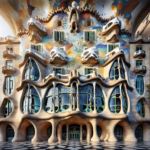 Casa Batlló: Which Ticket?
Casa Batlló: Which Ticket?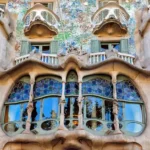 Explore Casa Batlló: Must-See Entries for 40-60-Year-Olds in Barcelona
Explore Casa Batlló: Must-See Entries for 40-60-Year-Olds in Barcelona Ownership of Casa Batlló
Ownership of Casa BatllóIf you want to know other articles similar to The Sagrada Familia: A Guide to Barcelona's Iconic Landmark you can visit the category Sagrada Familia.
Deja una respuesta

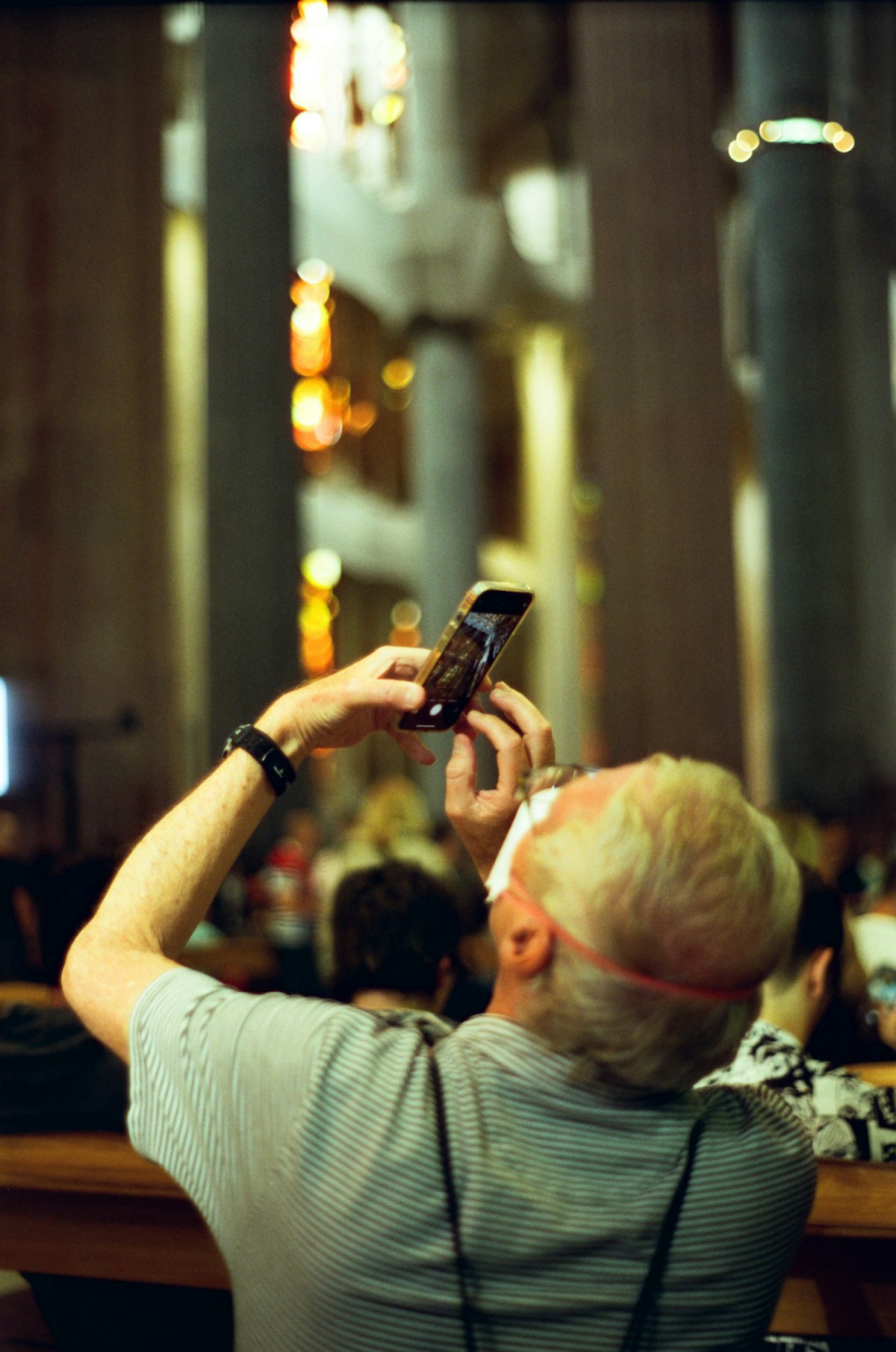
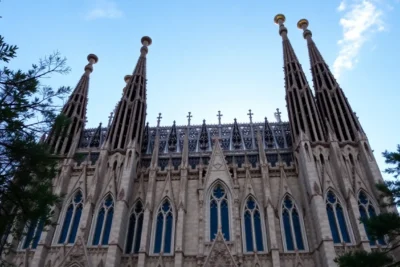
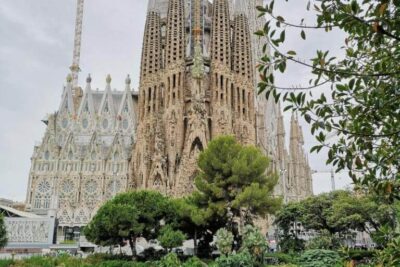
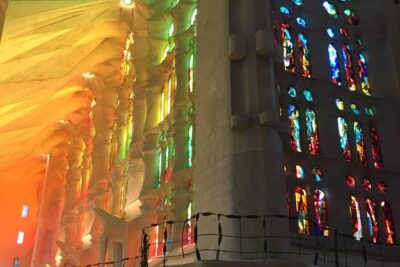
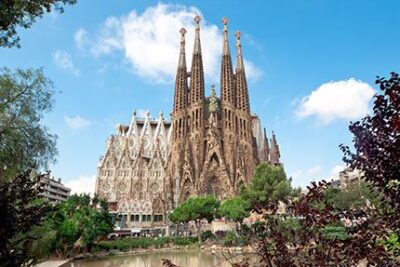
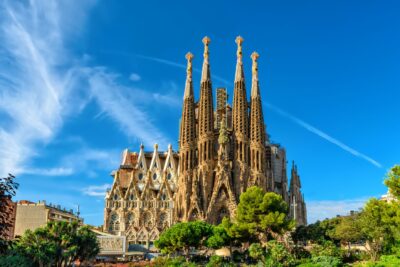
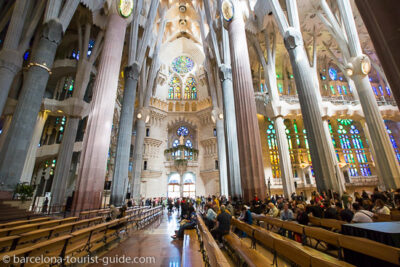
Read more!